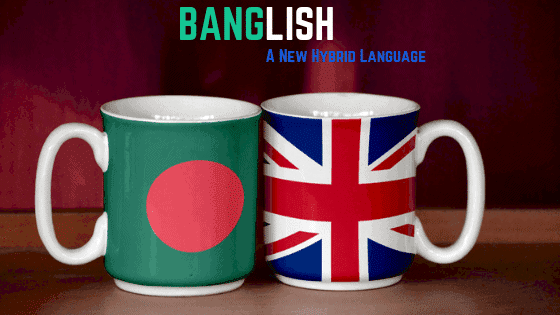
Young Bangladeshi people started migrating to the United Kingdom (UK) during the early 19th century because of the socio-economic conditions in Bangladesh, which were much worse compared to the countries of the Middle East (Das, 2013). According to Wikipedia: the Decennial Census (2011), there are 451,529 (0.7% of UK’s population) of British Bangladeshi living in the UK. Among them, 49.5% considered Bengali as their mother tongue including two renowned dialects; Sylheti and Chatgaya while 47.9% stated English. Bangladeshis in the UK are highly diverse and well integrated with the British culture. In 2018, some additional of around 231,000 Bengali-speaking immigrated people lifts Bangladeshis to the fourth biggest ethnic minority community and the fifth most spoken language in UK.
Over the last few decades, it was found that people often switch codes between Bangla and English languages in online communication platforms; expressly on Facebook. The new hybrid language has tantalized the researchers about the factors motivating Bangladeshi people residing in the UK to switch codes between Bangla and English languages in online communication. The word ‘Banglish’ was coined to describe the hybrid language spoken by British Bangladeshis in East London Borough. Afterwards, it became a common hybrid linguistic code-switching throughout the South Asian countries because of its many lingering effects of British colonialism (Hoque, 2015). It was then included and introduced to the Wiktionary dictionary. The increase of Bangladeshi migration to the UK brings up the new trend of Banglish language that refers to the blend of both inherent Bangla language and adopted and assimilated of the host English language (Wiktionary, 2015).
Some recent studies have demonstrated that Banglish language may facilitate the communication within the community. This may hold true especially for those who are not proficient in one of the two languages: English and Bangla. Besides, Banglish can have social and economic impacts, and affect positively the Bangladeshis’ integration into the UK society. Though Banglish is not yet considered to be a fully diasporic language, many Bangladeshi locals residing in the UK started using the assimilation of the Bangla and the adopted English languages in their business logos, shop corners, and sign boards (Chowdhury, 2018).
Examples of Banglish:
“Amader exam routine publish hoyese.” Translation: “Our exam routine has been published”.
“Stop writing. Somoy sesh.” Translation: “Stop writing. Time is up”.
“I do not know. Ata kivabe korbo.” Translation: “I do not know how to do it”.
“Tomar barir interior ta onek sundor decorate and design koreso.” Translation: “You have decorated and designed beautifully the interior of your house”.
References:
Chowdhury, Munzer Ahmed. (2018). “The triumph of Bangla in the UK.” Bangla Tribune, March 07, 2018. https://www.dhakatribune.com/bangladesh/2018/02/20/triumph-bangla-uk/
Das, Tulshi Kumar. (2013). “Migration of Sylhetis to the United Kingdom: An Exploration.” http://www.publishingindia.com/GetBrochure.aspx?query=UERGQnJvY2h1cmVzfC8xNjE5LnBkZnwvMTYxOS5wZGY=
Hoque, Aminul. (2015). “British-Islamic Identity: Third-Generation Bangladeshis from East London.” Institute of Education Press. https://www.tandfonline.com/doi/full/10.1080/01425692.2017.1406335?af=R
Wikitionary. (2019). “Banglish.” Last modified, March 12, 2019. https://en.wiktionary.org/wiki/Banglish
Wikipedia. (2019). “British Bangladeshi” Last Modified, March 14, 2019. https://en.wikipedia.org/wiki/British_Bangladeshi
 Written by Md Shahadat Hossain, a study visitor in communication at the Terminology Coordination Unit of the European Parliament (Luxembourg) and a student of the Master’s programme in Learning and Communication in Multilingual and Multicultural Contexts at the University of Luxembourg. He holds a Bachelor degree in English Language and Literature, and a Master’s degree also in English Language and Teaching from Jahangirnagar University, Bangladesh. He speaks Bangla, English, French, Hindi, Urdu and Arabic.
Written by Md Shahadat Hossain, a study visitor in communication at the Terminology Coordination Unit of the European Parliament (Luxembourg) and a student of the Master’s programme in Learning and Communication in Multilingual and Multicultural Contexts at the University of Luxembourg. He holds a Bachelor degree in English Language and Literature, and a Master’s degree also in English Language and Teaching from Jahangirnagar University, Bangladesh. He speaks Bangla, English, French, Hindi, Urdu and Arabic.

